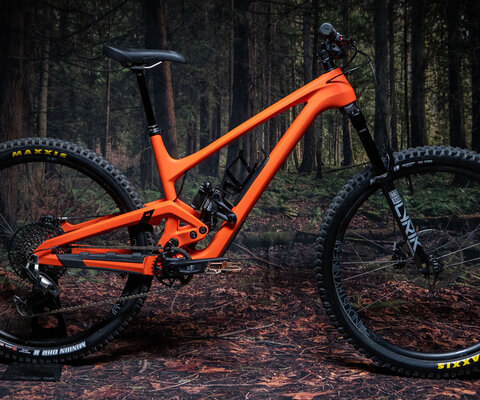
Finding the Small Way The Key to True Experience
Words and Photos by Chris Reichel
Monkeys are assholes.
Over the years, I have grown to hate the jungle for many reasons: the suffocating heat, humidity, and all the critters and bugs can make you miserable in no time. Like the leeches I keep having to pull off my legs, or the water buffalo that occasionally block my way. But it’s the monkeys, with their opposable thumbs and bad attitudes, that really piss me off.
My pilgrimage to the Himalaya began when I pedaled out of Kathmandu, Nepal on my fully loaded trail bike. I didn’t have any real plan, but I had a month to figure one out. The only problem was the three days of jungle riding standing between me and the high peaks of my dreams. Sure, I could have hopped a truck straight to the mountains. But I feel like every great pilgrimage needs a bit of suffering.
It’s easy to be negative and miserable while slogging up rutted, muddy doubletrack in a tunnel of dark green trees I don’t recognize, while sounds of cicadas and birds echo all around me. Which I am. I keep hoping for some glimpse of the alpine, but it is early fall and a haze is still left over from the summer monsoon season.
Then it happens. I look up valley and catch a glimpse of strange-looking clouds, which I realize on second glance are the tops of the biggest mountains I have ever seen in my life. The sight invigorates me like a bump of cocaine, and the past three days of misery disappear. I break out maps and start looking for villages with no nearby roads. People have to get home somehow, and I bet it’s by trail. Singletrack jackpot.
I start interacting with anyone I see, a big, dumb Westerner on a bicycle, gesticulating wildly and blurting out words like a caveman. As I don’t speak Nepali and very few locals speak English, I get by with a mixture of charades, map pointing and small incomplete sentences. Finally, I arrive at a village in that beautiful sweet spot where leafy jungle melds into pine forest, a magical brackish zone where arboreal currents intermingle and the scent of pitch in the cool air welcomes me to the mountains.
I meet a teenager who speaks a little bit of English, and over a few cups of tea he explains some of the local lingo. Switchbacks are “zigzags,” the road I have been riding is the “big way,” and the singletrack I’m searching for is called the “small way.”
The small way! Of course. Those modest and often- forgotten trails that connect people and nature. These secret words open the door to everything for which I’ve been looking, allowing me to move through the mountains more efficiently. Over the next month I ride flowy ridgeline trails created by hundreds of years of foot traffic. I push my bike through the snow above high-alpine passes and carry it up thousands of stone steps carved into the mountainside. I scare myself by bombing goat and yak trails, straight down the fall line. Sometimes I even walk technical sections, when the scale of the landscape’s remoteness sinks in.
This trip happened years ago, but I still think of it often. It set off a chain reaction in my life, leaving me addicted to finding and riding as many trails as possible, to experiencing all the dirt, people and emotions that come with exploring by bicycle.
I have been lured back to the Himalaya a few times since, each trip armed with greater knowledge, more riding skill and better gear. It inevitably makes me think back on where mountain biking started and how far it has come. But even with all the progression, it’s still hard to beat the feeling of dropping into a trail you have never ridden. Whether close to home or on the other side of the planet, few things are more thrilling than finding the small way.

![“Brett Rheeder’s front flip off the start drop at Crankworx in 2019 was sure impressive but also a lead up to a first-ever windshield wiper in competition,” said photographer Paris Gore. “Although Emil [Johansson] took the win, Brett was on a roll of a year and took the overall FMB World Championship win. I just remember at the time some of these tricks were still so new to competition—it was mind-blowing to witness.” Photo: Paris Gore | 2019](https://freehub.com/sites/freehub/files/styles/grid_teaser/public/articles/Decades_in_the_Making_Opener.jpg)



